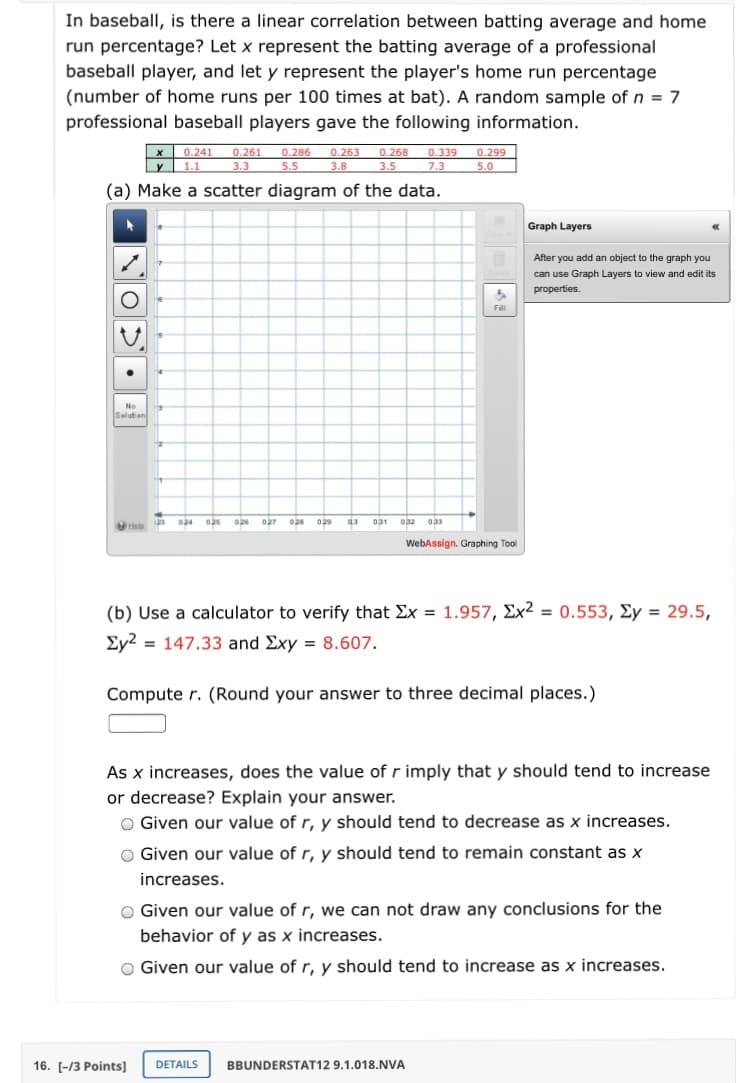In baseball, is there a linear correlation between batting average and home run percentage? Let x represent the batting average of a professional baseball player, and let y represent the player's home run percentage (number of home runs per 100 times at bat). A random sample of n = 7 professional baseball players gave the following information. x0.241 0.263 3.8 0.261 0.286 0.268 3.5 0.339 0.299 y 1.1 3.3 5.5 7.3 5.0 (a) Make a scatter diagram of the data. Graph Layers After you add an object to the graph you can use Graph Layers to view and edit its properties. WebAssign. Graphing Too (b) Use a calculator to verify that Ex = 1.957, Ex2 = 0.553, Ey = 29.5, Ey2 = 147.33 and Exy = 8.607. Compute r. (Round your answer to three decimal places.) As x increases, does the value of r imply that y should tend to increase or decrease? Explain your answer. O Given our value of r, y should tend to decrease as x increases. O Given our value of r, y should tend to remain constant as x increases. Given our value of r, we can not draw any conclusions for the behavior of y as x increases.
Correlation
Correlation defines a relationship between two independent variables. It tells the degree to which variables move in relation to each other. When two sets of data are related to each other, there is a correlation between them.
Linear Correlation
A correlation is used to determine the relationships between numerical and categorical variables. In other words, it is an indicator of how things are connected to one another. The correlation analysis is the study of how variables are related.
Regression Analysis
Regression analysis is a statistical method in which it estimates the relationship between a dependent variable and one or more independent variable. In simple terms dependent variable is called as outcome variable and independent variable is called as predictors. Regression analysis is one of the methods to find the trends in data. The independent variable used in Regression analysis is named Predictor variable. It offers data of an associated dependent variable regarding a particular outcome.

Trending now
This is a popular solution!
Step by step
Solved in 2 steps with 2 images


